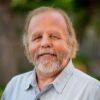Improvements come in all shapes and sizes.
Little ones like getting the cat to use the litter box without flinging stuff all over the floor. A big improvement might be cutting 30 minutes out of the time from 911 call to balloon inflation in the cath lab for STEMI patients. A colossal improvement would be something like eradicating polio or improving auto safety that results in cutting crash-related deaths from 18 deaths per million miles traveled to two deaths per million miles traveled.
A clear and concise AIM statement is a powerful guide to improvement work on small, medium, and large projects. For colossal improvements, we need something more than an AIM, we need a compelling vision. Something that paints a clear picture of a desired future that large groups of diverse professionals can work toward.
For example, President John F. Kennedy described a colossal vision during a May 25, 1961 speech to a special session of congress. “I believe that this nation should commit itself to achieving the goal, before the decade is out, of landing a man on the moon and returning him safely to the earth,” Kennedy said.
I remember as a 10-year-old sitting on the floor in front of our black and white TV taking pictures with my Instamatic camera of astronauts Neil Armstrong and Buzz Aldrin landing on the moon. Kennedy’s vision was realized in grand style.
Health care and EMS visionaries
In the health care world, there are few people more visionary than Don Berwick, MD, the founding president of the Institute for Healthcare Improvement. I was in the audience on Dec.14, 2004 when — frustrated with the slow pace of improvement — he threw down a gauntlet, challenging us to save 100,000 lives in the next 18 months. He went on to articulate a path, an agenda of sorts, to accomplish this vision. In June 2006, IHI tallied up the results and 122,300 lives had been saved by making tangible improvements in American hospitals.
Twenty-one years ago, a group of farsighted EMS leaders came together and created the 1996 EMS Agenda for the Future. That grand vision has guided and inspired researchers, regulators, innovators, and educators for the last two decades. We’ve all benefited in one way or another from their efforts.
The time has come to craft a new vision for our EMS profession and the people/communities we serve. I’ve been invited to facilitate the creation of EMS Agenda 2050 called for by the Federal Interagency Committee on EMS with funding support from the National Highway Traffic Safety Administration’s Office of EMS, the Health Resources and Services Administration’s EMS for Children program, the U.S. Department of Health and Human Services’ Office of the Assistant Secretary for Preparedness and Response, and the U.S. Department of Homeland Security’s Office of Health Affairs. Our mission is to bring all aspects of the EMS community to the table for an open, inclusive and collaborative process to create a bold vision for the future of EMS in America.
Close to 150 remarkable professionals and leaders have applied to be part of the 10-person Technical Expert Panel for this project. The team of 10 people who have been selected from this group to serve on the panel come from various locations in the United States, have a wide range of professional perspectives, a deep list of competencies, and a commitment to collaboration. Their role will be to listen deeply to you, your colleagues and your professional associations about your hopes for the future. They will gather ideas, innovations, and dreams about what we can build, and then will assemble them into a bold, coherent vision of EMS in the future.
When I think about 2050, my 5-year-old son, Ax, will turn 37, my smartphone and the computer I’m writing this on will belong in an antique shop, I will have been on Medicare for 26 years (presuming that it and I are still around), Justin Bieber will be 56, Lady Gaga will be 64 and we will be on president number 52 or higher.
Can you close your eyes for a second and imagine yourself in 30 years? How old will you be? Where will you be living? Will you still be a provider of EMS services or is there a better chance that you’ll be a consumer? Think about the young people you know now. What would you hope for them if they are working in or being cared for by EMS more than three decades from now?
Please send us your hopes, ideas and dreams for what you’d like EMS to be in the future. Do not be constrained by current reimbursement systems or today’s technology. Don’t worry about feasibility, if we were constrained by what could be done we’d never have gone to the moon or eliminated small pox. Don’t constrain yourself — dream big, wild, audacious ideas and share them with us. Who knows, your idea might just be the example that’s used when the future leaders of EMS write about the success of EMS Agenda 2050, as part of the EMS Agenda 2080 planning process.
For more information about this initiative, to share your ideas and to sign up for regular updates, go to EMSAgenda2050.org join us on Facebook.com/EMSAgenda2050. We will be hosting four open listening/workshops in various parts of the country this fall and next winter, dates and places soon to be announced. We hope that you’ll join us for one of them and please contribute as many ideas as often as you’d like.













